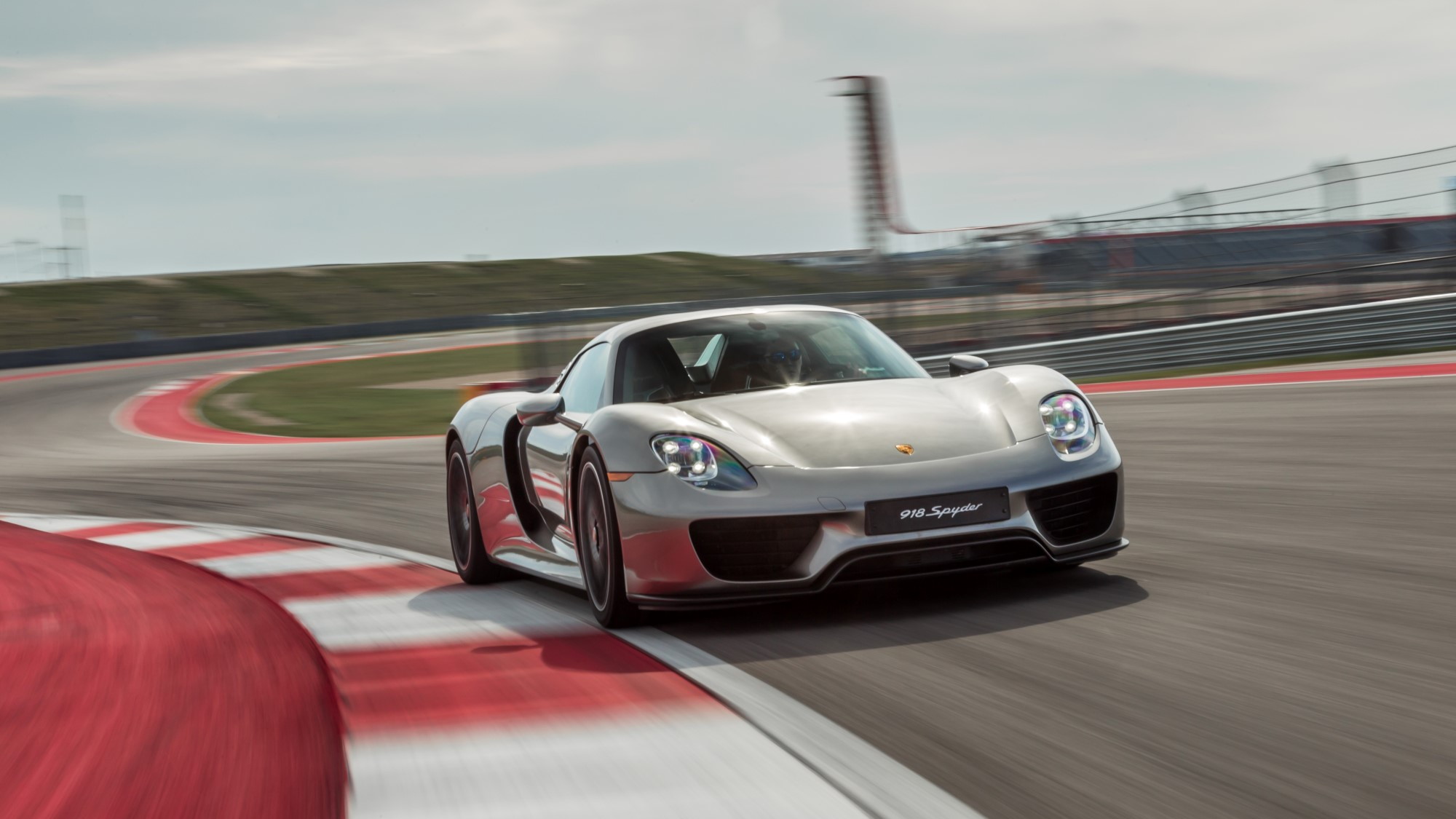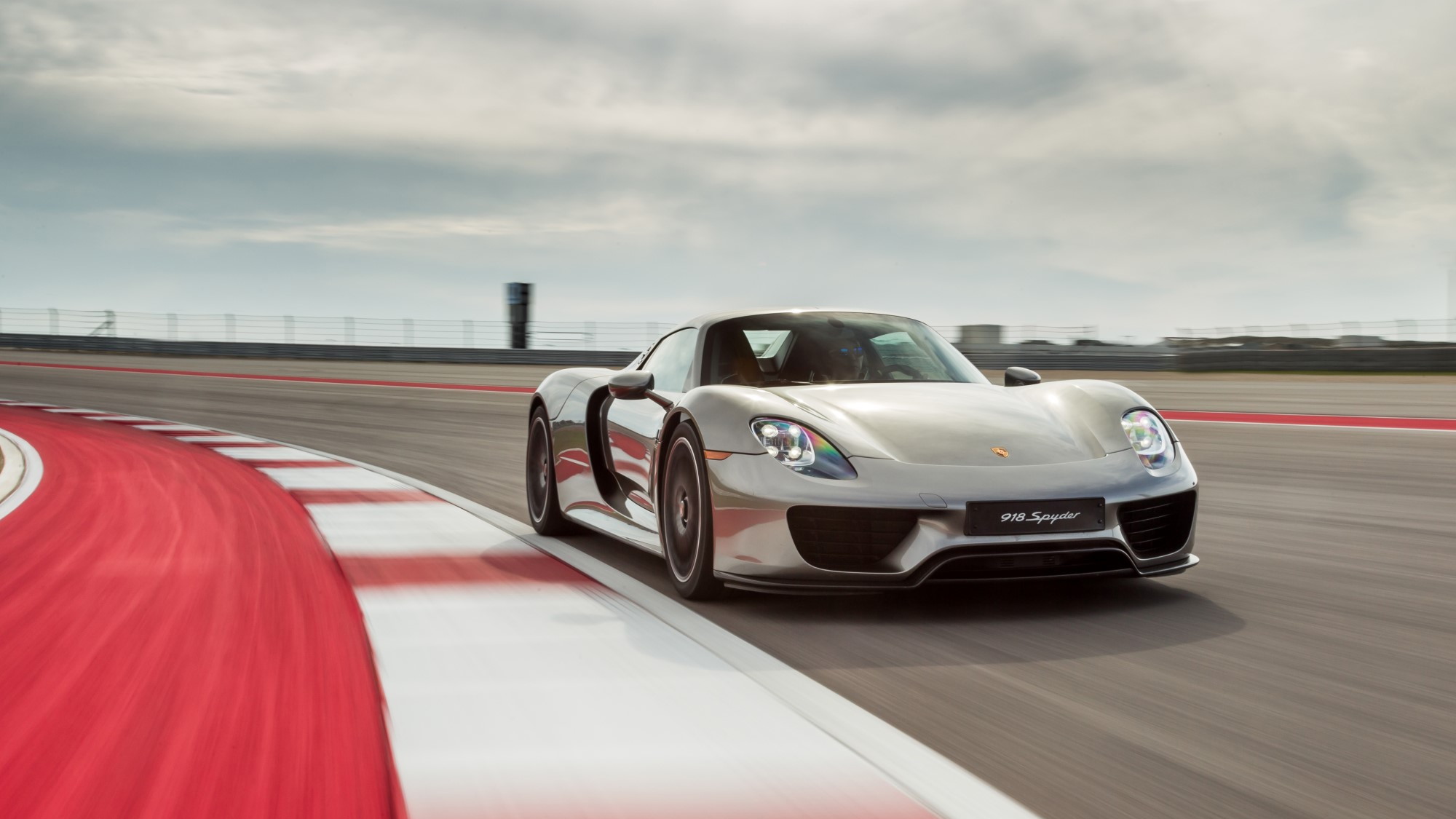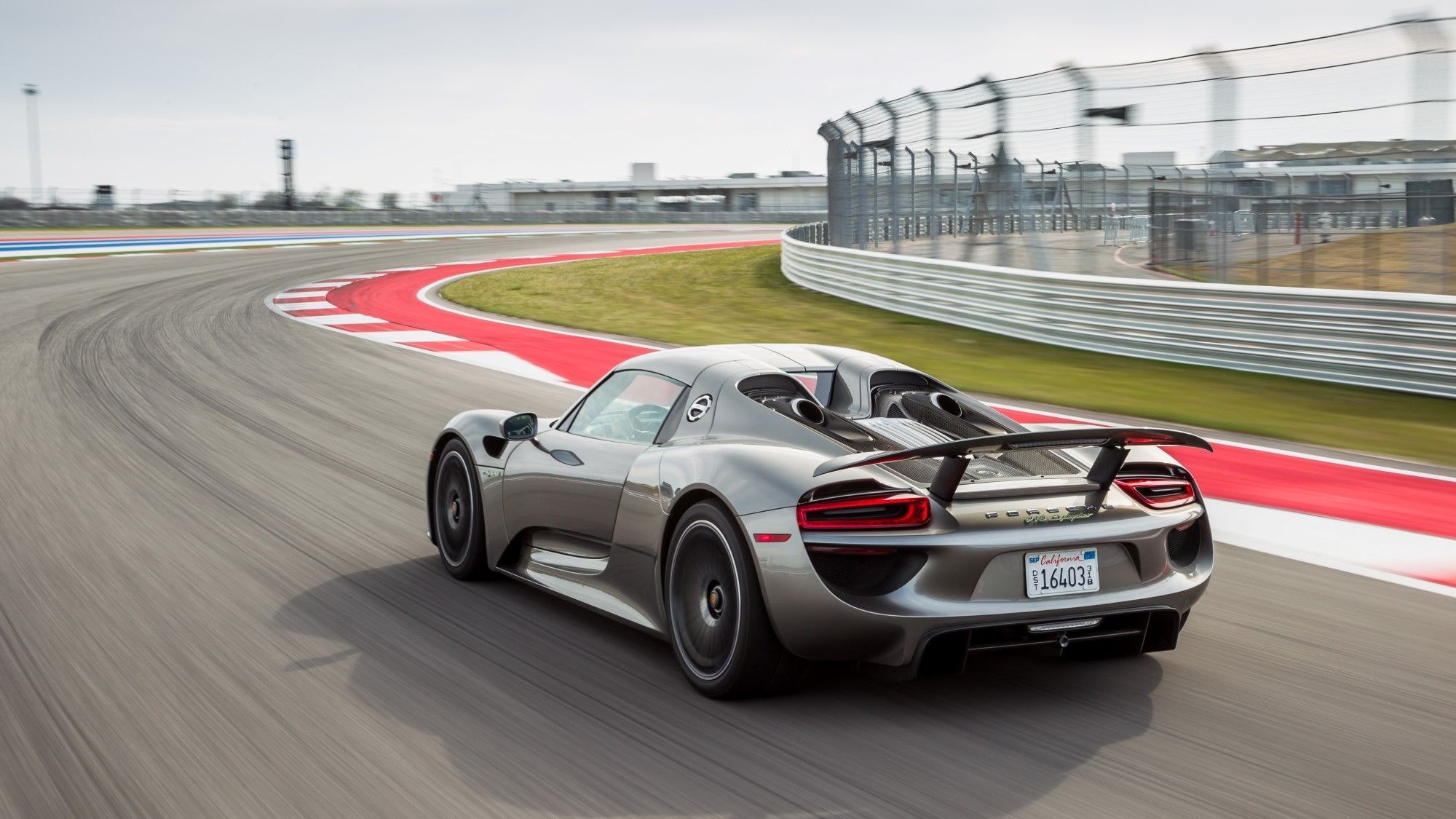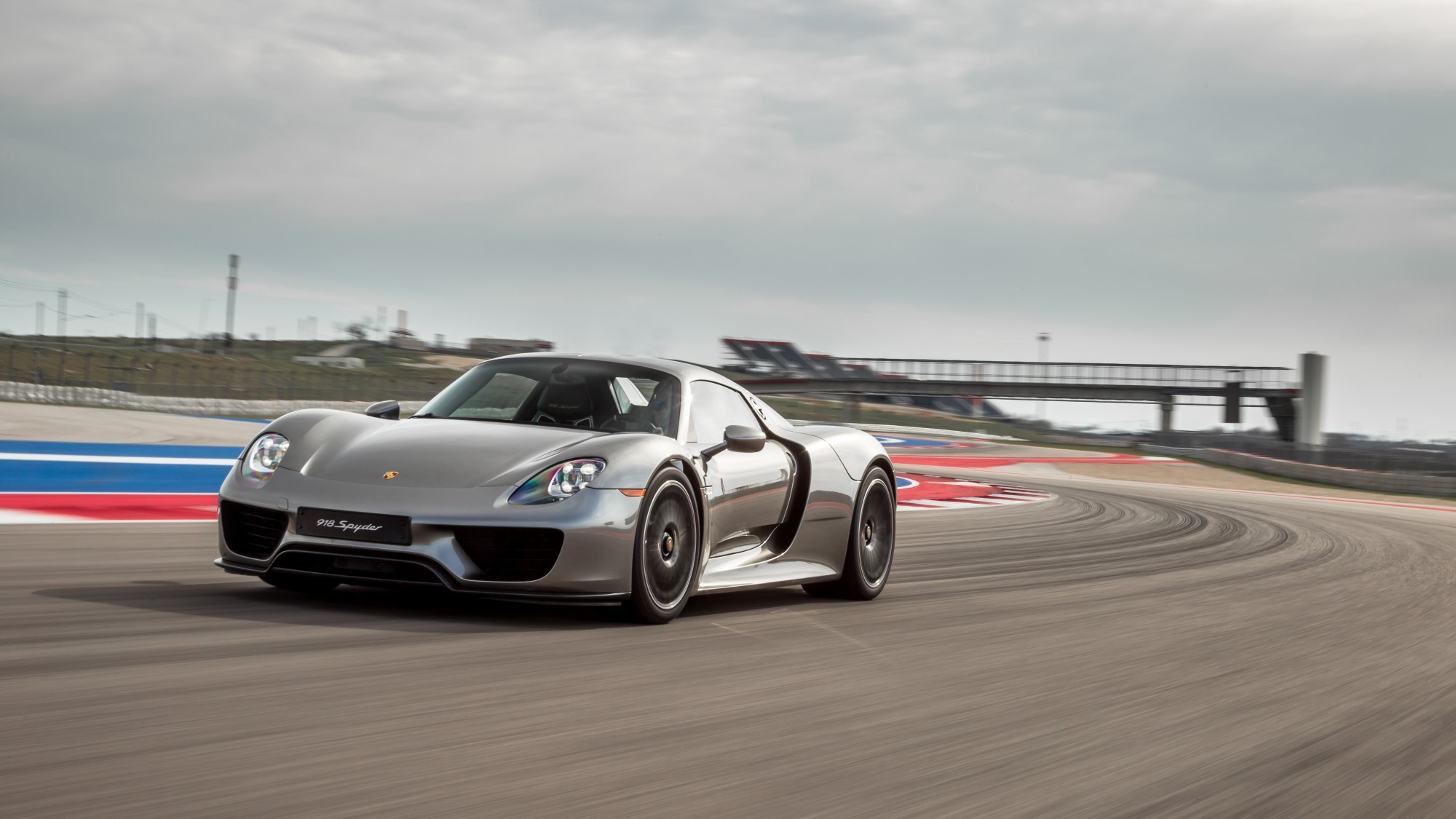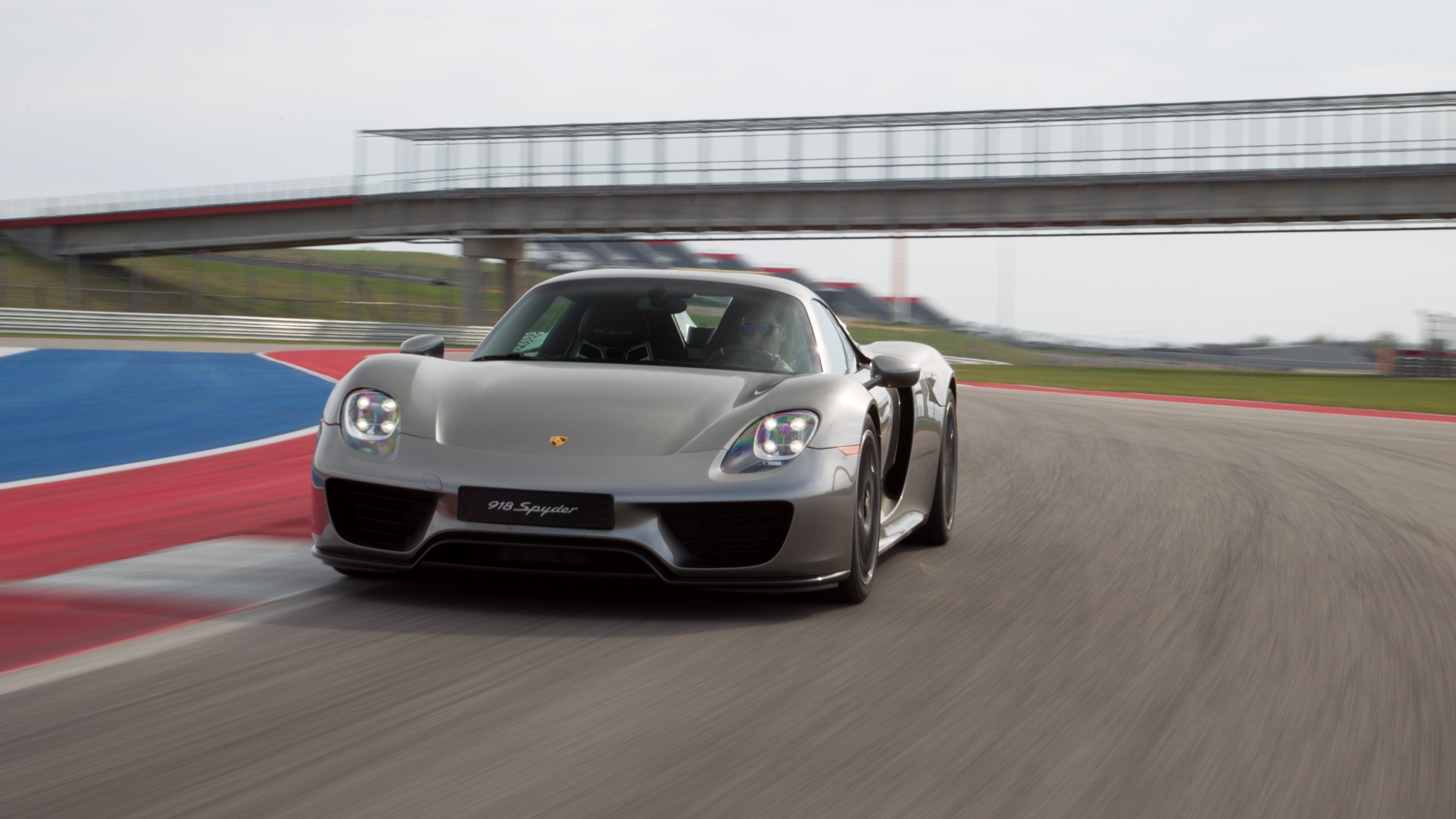It’s not often you’re behind a professional race car driver who’s pushing flat out in a Porsche 911 Turbo S, and you think to yourself, “I wish this guy would pick up the pace a bit.” But that’s exactly what you find yourself thinking when you’re chasing that pro from the cockpit of the 918 Spyder.
And you’re not even breaking a sweat.
The 918 Spyder is just that good. As a speed machine, it’s utterly untouchable by the pantheon of cars that deign to confer with mere mortals. In the newly-discovered territory of the hypercar stratosphere it may have one or two equals, but very few cars in the sub-$1-million class can hang with the 918 Spyder, and none do it with the un-flustered ease of the halo Porsche.
ALSO SEE: Honda's Mean Mower Is Officially The World's Fastest Lawnmower At 116 MPH: Video
Pay no attention to that man behind the curtain
If, at some point, you find yourself executing flawless apexes at speeds that you’d normally encounter at the end of a middling-length straightaway, and wonder to yourself, “Just how in the hell did I do that?”, you’ll have taken the Wizard of Oz’s advice to heart. You’ve ignored the man—or, more precisely, the 80 or so computers—behind the 918’s technological curtain. The giant green-headed monster of flaming speed is very real to you. The illusion is preserved.
Make no mistake: the speed is real. You’re really doing it. But there’s a whole lot going on behind the scenes to make that experience possible. Computers talk to computers, telling each other how much power to apply to the front axle (which has its own standalone electric motor, capable of delivering up to 129 horsepower). Other computers take that information and filter it through their own algorithm, deciding how much power to send from the 156-horsepower rear electric motor to the rear axle, while the 608-horsepower V-8 engine does the same, all of them responding to the requests of your right foot.
In the middle of this 214-mph internet on wheels, still more computers are deciding how to best vector that per-axle power to each individual wheel, pushing and pulling the 918 around corners with grip like an errant bead of JB Weld left overnight on a workbench.
But unless you pull back the curtain, all of this goes on behind the scenes, so transparently, so free of interference with the driver, that it seems as if it’s not happening at all—only the speed is real.
There’s a price for this processing perspicacity, however, paid in weight and in a vague sense of something artificial in the mix. There's a thin film between you and your partner in this salacious asphalt tango, but one felt only as a sort of dim awakening, cloudy at the back of the mind. It doesn't ruin the fun, but it does mute it ever so slightly.
Working the levers
Once you do pull back the curtain and see the real source of the show, you're no less impressed. For all of the erstwhile magic happening from your viewpoint behind the wheel, the reality of the situation is no less magical. Porsche's engineers have taken a brilliant, raucous 9,150-rpm Le Mans P2 prototype V-8 engine and opened it up just a bit, then stuck it--and its tailpipes--right behind your ears. Romp on the loud pedal and things get fun in a hurry.
Those same engineers have also worked in a pair of electric motors, one at the rear, and one at the front. The electric motor at the rear helps to drive the rear wheels whenever called upon, or does it on its own in electric mode. At the front, another electric motor lies just aft of the front axle, but with a twist: it's completely decoupled from the powertrain bits at the rear. That's right, that front motor is all on its own, running in sync with the rear through some NASA-grade wizardry at speeds up to 165 mph. After that, the 918 Spyder becomes rear-drive only.
DON'T MISS: Watch The Porsche 918 Spyder's Record Nürburgring Run: Video
Underlying all of the powertrain synchronization is a single-mode traction and stability control system, ready to handle everything from a gravel-strewn mall parking lot to a 140-mph apex. It's so well-tuned that we never once felt it intrude on our fun, even when we were testing the limits on track--it will let you slide, countersteer, apply throttle to correct yaw, and more. Part of the magic here is the torque vectoring enabled by the electric motors on each axle. Sophisticated electronics apply more power, rather than stealing power or applying brakes, to help match the car's course to your intended arc.
It's simply a very good stability control system. It wouldn't be a good stability control system at all if you couldn't turn it off, but you can--not that you'd ever really want to, unless it were to shred some rear tires.

2015 Porsche 918 Spyder
Tying it all together is a set of five modes that alter the character of the 918 Spyder significantly. Accessed through the knob at the four o'clock position on the steering wheel, the modes are: E-Power, Hybrid, Sport Hybrid, Race Hybrid, and, with a press of the central red button while in Race mode, Hot Lap mode.
E-Power (electric) mode does just as you'd expect, siphoning off the car's 6.8-kilowatt-hour supply of electrons to supply a maximum of 230 kW of power to the two electric motors for a maximum range of up to 19 miles (not coincidentally, about the distance from Weissach to Zuffenhausen), or about 12 miles in more normal driving conditions. A Jetson's-like whine accompanies the all-electric mode, louder at lower speeds, then slowly subsumed by the susurrus of the wind over the cabin. You might think the 918 Spyder would feel a bit sluggish in electric mode, but you'd be wrong; and if you need to accelerate more quickly than electric mode will allow, give it the boot, and the car will automatically kick on the throaty V-8 and send you into Hybrid mode.
Hybrid mode is likely the setting most drivers will use most often, leveraging the extra power of the electric side of the drivetrain, while also taking every opportunity to turn off the gasoline V-8 and top up the battery packs through regenerative measures, thus maximizing efficiency. It's a seamless, easy-going mode that feels the most like driving an ordinary car. There's plenty of pep whenever you'd like it, but the 918's around-town manners are impeccable in Hybrid mode.

2015 Porsche 918 Spyder
Opt for Sport Hybrid mode and the car becomes just a bit more aggressive on throttle application, feeling more eager to leap forward with each millimeter of the pedal's sweep. The V-8 stays on continuously in this mode, enhancing performance through application of the electric motors' power at ideal points in the rpm band.
Race Hybrid mode kicks everything up a notch further, from the use of the combustion engine to the rate of recharge of the battery packs--after all, they need to be charged to deliver full electric boost. The PDK dual-clutch gearbox is also tuned for faster shifts, and the system extracts the maximum power output from the electric motors.
Hot Lap mode takes it to the extreme of the 918 Spyder's abilities, pushing to the absolute limits of the battery and electric motors, tapping all of the available energy for the fastest single lap time possible.

2015 Porsche 918 Spyder
Back in Kansas
The interior of the 918 Spyder is, in most respects, rather normal. Leather covers just about everything that's not made of carbon fiber or brushed aluminum; the steering wheel is familiar, though it bears a few extra adornments; the view out the windshield is clear and wide. It's a welcome sense of normalcy--after all, there's no place like home.
Fixed-back racing-style carbon fiber bucket seats limit seating positions, and the steering wheel telescopes, but doesn't tilt, but your 6'2" American-built author had no trouble getting comfortable in either the driver's or passenger's seat. One thing you won't find in most Porsches is located just below the passenger's knees: a fire extinguisher, strapped to the floor.

2015 Porsche 918 Spyder
A unique infotainment system sets the 918 Spyder apart from Porsche's typically button-heavy console, however, replacing the buttons with capacitive touch sensors arrayed along a narrow, high strip down the middle of the cabin. At the top of this center span is a portrait-layout screen that displays and controls the cabin functions. Just above that screen, arrayed horizontally in the center of the dash, is a secondary screen, angled toward the driver, where navigation, charge state, and other information can be displayed. While we didn't get much time--or have much inclination--to futz with the sound system, the 918 Spyder does come with a Burmester audiophile-grade stereo.
Driving the 918 Spyder around suburban streets, along interstates, or through town, you'll find it to be surprisingly familiar. It's comfortable, more so than many sports cars, let alone supercars, only jostling the occupants over the more extreme lapses in road maintenance. Steering, braking, and throttle are all light and easy, making it painless to simply trundle along with the flow of traffic.
The everyday driving experience is almost disappointing in its normality, until you realize the true magic of the 918 Spyder: It's like owning a Chevy Volt that can fit an 887-horsepower hyper-hybrid in the trunk; it's a tender that can pull its own sport-luxury yacht. It's a set of ruby slippers that can take you home in the blink of an eye--or lead you on an adventure the likes of which you've never seen. It's the crowning achievement of the powerful brains at Porsche, and it's brilliant.
